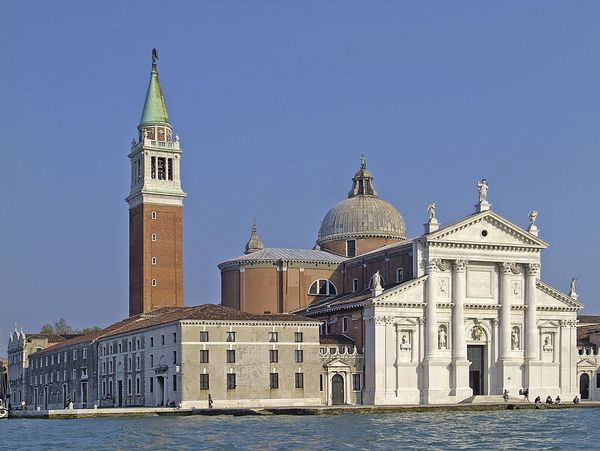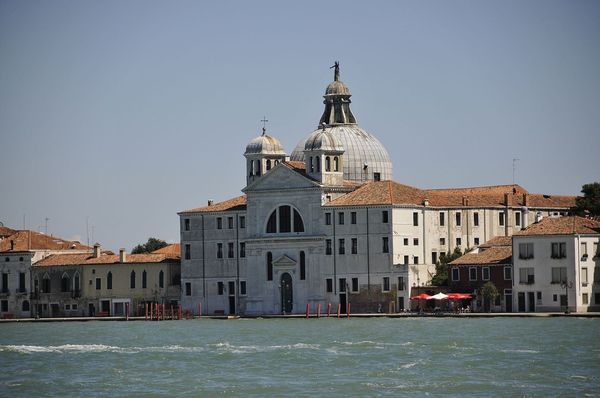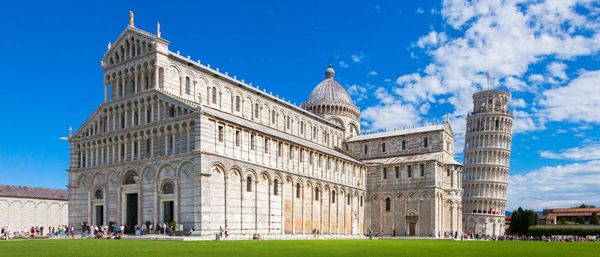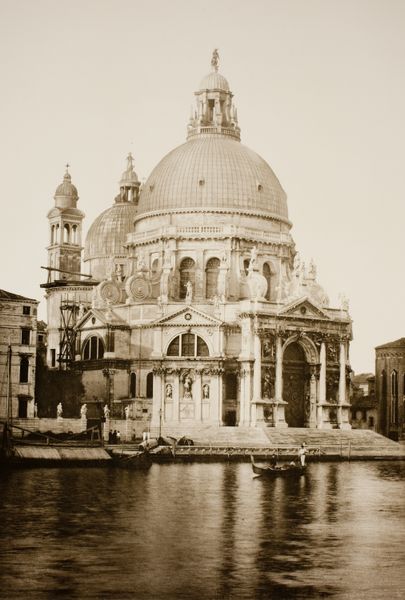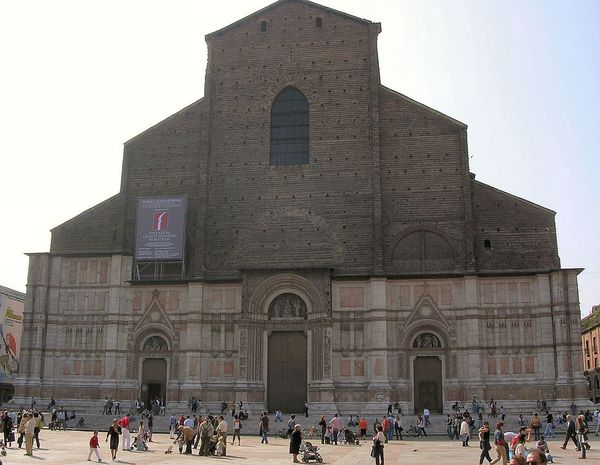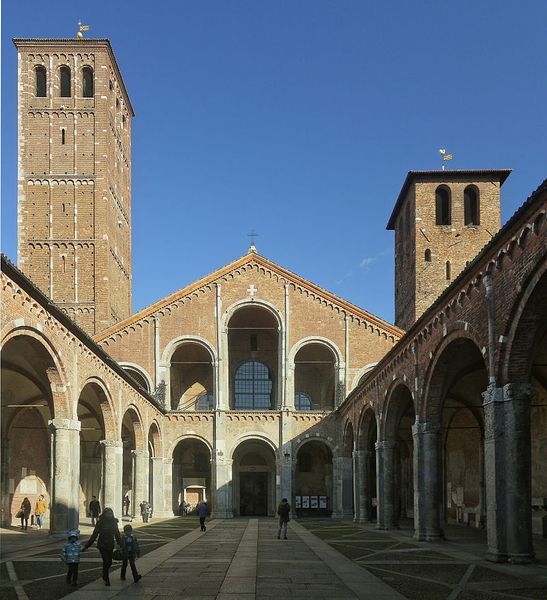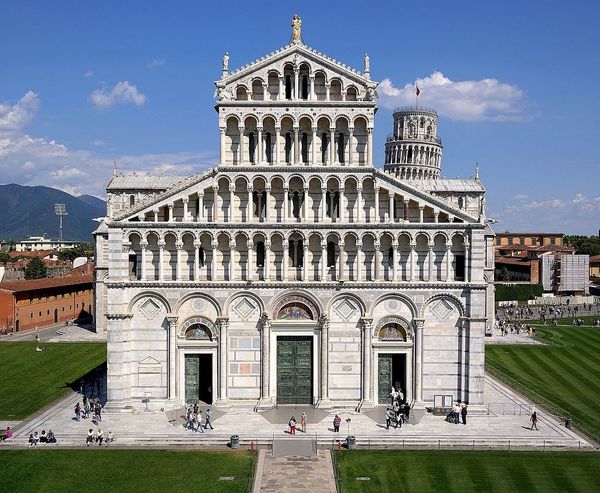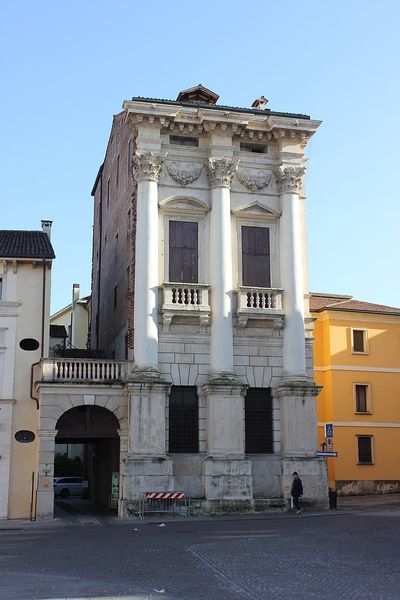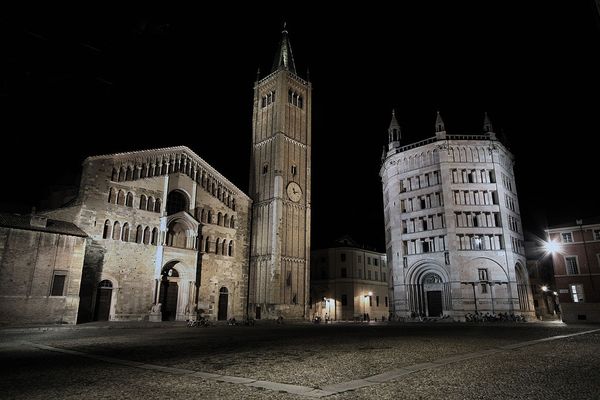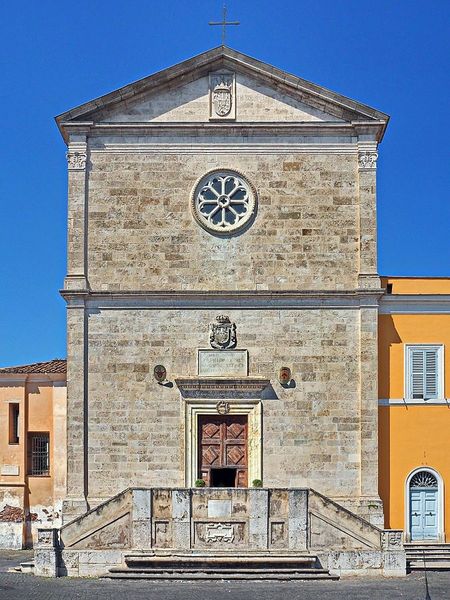
public-art, site-specific, architecture
#
public art
#
venetian-painting
#
medieval
#
landscape
#
urban cityscape
#
public-art
#
historic architecture
#
11_renaissance
#
site-specific
#
cityscape
#
italian-renaissance
#
architecture
#
historical building
Copyright: Public domain
Curator: The sheer visual dominance of this… It almost radiates power, doesn’t it? The composition, with its rigid symmetry and that massive dome, feels so… imposing. Editor: And with good reason! What we’re looking at is Il Redentore, in Venice. It was designed by Andrea Palladio and construction began in 1577. Curator: Immediately after the plague ended, if I remember correctly. To understand the building you also have to know how Venice operates. It represents so much more than just religious devotion. Its placement and grand scale make it inherently about Venice’s survival, its resilience… the assertion of power after trauma. Editor: Precisely. Commissioned as a votive church following the end of a terrible plague, Il Redentore stands as a physical manifestation of the city's deliverance. Palladio masterfully incorporates classical elements, reflecting the ideals of the Renaissance and tying into Venice's self-image as a 'new Rome.' It's really an intersection of spiritual promise and civic pride. Curator: The interior’s interesting too – those bright, open spaces almost democratize holiness, in stark contrast to older cathedrals with hidden corners. One sees hints of contemporary social justice in the design: light is given freely, irrespective of status. Editor: True, and from a purely artistic viewpoint, note the interplay between light and shadow across the facade. Palladio uses this to enhance the three-dimensionality of the building. The church’s connection with the annual festival – which is a huge party that requires crossing a temporary pontoon bridge across the water to get here – shows the ongoing public function the building continues to have. Curator: I can appreciate how it continues to play this important social and political role within the cultural context of Venice. What may once have seemed simply religious now embodies how people seek control over history. The Redentore becomes a focal point. Editor: Yes. Exploring Il Redentore invites us to consider art as an active force. Curator: For me, seeing this now, I see a community's defiance, immortalized in stone.
Comments
No comments
Be the first to comment and join the conversation on the ultimate creative platform.
